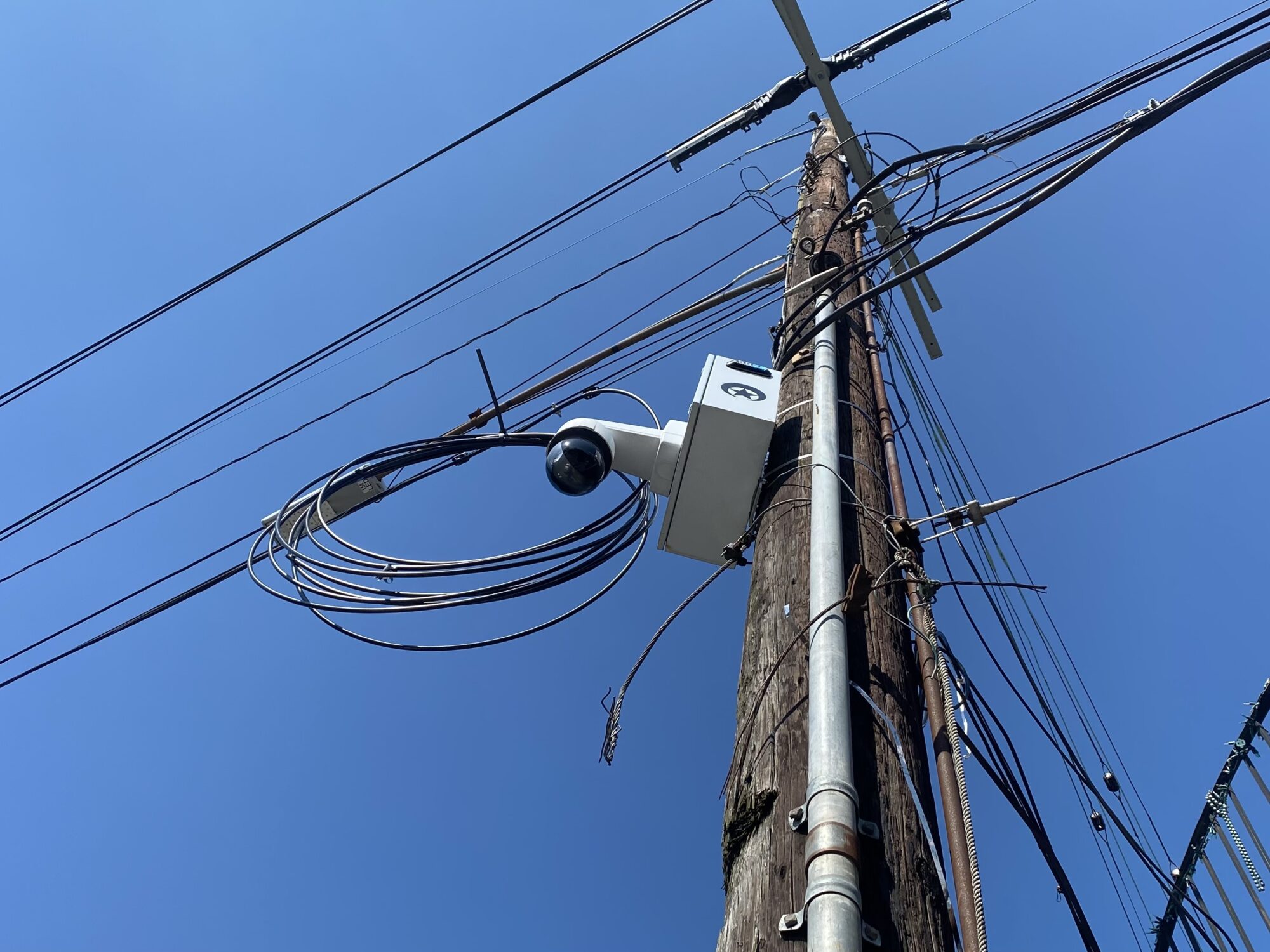Changemaker Catalyst Award recipient Simone Skeen designed an interview-based field study to explore the community mental health effects of New Orleans’s uniquely vast, pervasive, police surveillance infrastructures. Simone is a social, behavioral, and population sciences doctoral student at the Tulane School of Public Health and Tropical Medicine, specializing in HIV digital health and computational social psychiatry.
In early July, 2023, the Orleans Justice Center’s “Phase III” jail expansion master plan was revealed. It is to be a Panopticon, a cylindrical prison surrounding a single, all-seeing (“panoptes” in Greek) watchtower. Described by City Councilman Oliver Thomas as “medieval at best,” and criminal justice policy specialist Jennifer Vollen-Katz as “chaotic, inhumane, ineffective,” and “overwhelming,” the Panopticon has long served, in the abstract, as an emblem of state surveillance, its “invisible omnipresence,” in designer Jeremy Bentham’s own words.

For New Orleans, home to an ever-expanding police surveillance infrastructure that incorporates more than 1,000 real-time camera feeds, embracing the physical symbolism of the Panopticon is all too pertinent. The city’s Real-Time Crime Center monitors ultra-high-resolution digital footage in real time, augmented by the New Orleans Peace & Justice Foundation’s SafeCam Platinum and New Orleans Police Department’s (NOPD) Neighbors by RING partnership, which grant law enforcement access to private surveillance footage, alongside Project NOLA, a nonprofit that claims to install an additional 5,000 cameras citywide, and across the Gulf South. While the political rhetorics touting the public safety benefits of such technologies emphasized their (unfulfilled) potential to aid retrospective criminal investigation, “live video stakeouts,” monitoring New Orleanians proactively, in real time, are apparently common.
Since 2022, NOPD can integrate facial recognition software, licensed by the French firm IDEMIA to the Louisiana State Analytical and Fusion Exchange, into active investigations of 39 violent crimes. Project NOLA offers algorithmic facial recognition capabilities to its clients, and to civilians via a free online portal, actively subverting the intent of the proactive facial recognition restrictions placed on NOPD. Commercial facial recognition algorithms, as revealed by a now-notorious National Institute of Standards and Technology vendor test, are particularly faulty in attempts to match the faces of Black, Asian, and Indigenous people, with rates of imprecision especially high when attempting to match Black women’s faces.
We are, in short, subjected to an all-seeing “data gaze” in New Orleans. While the deployment and ever-evolving expansion of our surveillance apparatus has not, it must be emphasized, gone unchallenged (notably by the Eye on Surveillance coalition), one line of inquiry remains largely overlooked: the effects of the panoptes on our psyches. How has the culture of our neighborhoods been altered by the incursion of highly visible “crime cameras” surveilling places of gathering? How does the knowledge of real-time surveillance, via AI-enabled military-grade algorithmic tracking, affect the mental health of our neighbors? And how, in particular, are those of us who transcend and transgress legible categories of race and gender, to navigate a world remade by ubiquitous dataveillance?
This latter point is especially important to me: as a trans-feminine person, I, too, exist beyond, but subordinate to, digitally embedded regimes of legibility. The dread that perpetually accompanies my entry into the Transportation Security Administration’s full-body scanners, and the inevitable invasive search that follows, inspired the scope of my Changemaker application.
The gender selection panel of a typical full-body millimeter wave scanner.
My Changemaker Catalyst Award–supported original research, Psy*FR: “Tracing the intra-Psychic sequalae of pervasive Facial Recognition–equipped police surveillance among Black, queer, transgender, and nonbinary New Orleanians” (currently under review by Tulane’s Socio-Behavioral Institutional Review Board) seeks answers to these questions, disentangling technologists’ design intent from the real-world design impact of their technologies, while honoring everyday stories of resistance and resilience.

I am grateful to the Taylor Center for supporting a work that brings me back to my earliest public health research, conducting in-person field interviews, on foot, across New York City, to gather the human stories behind the data captured by the city’s syndromic surveillance systems. As an aspiring socio-technical scientist, immersed increasingly in computation and abstraction, Psy*FR allows me, simultaneously, to advance much-needed research into the human costs of pervasive surveillance technologies, and return to the basics of public health fieldwork: meeting New Orleanians, recording their stories, perspectives, triumphs, and expertise.


